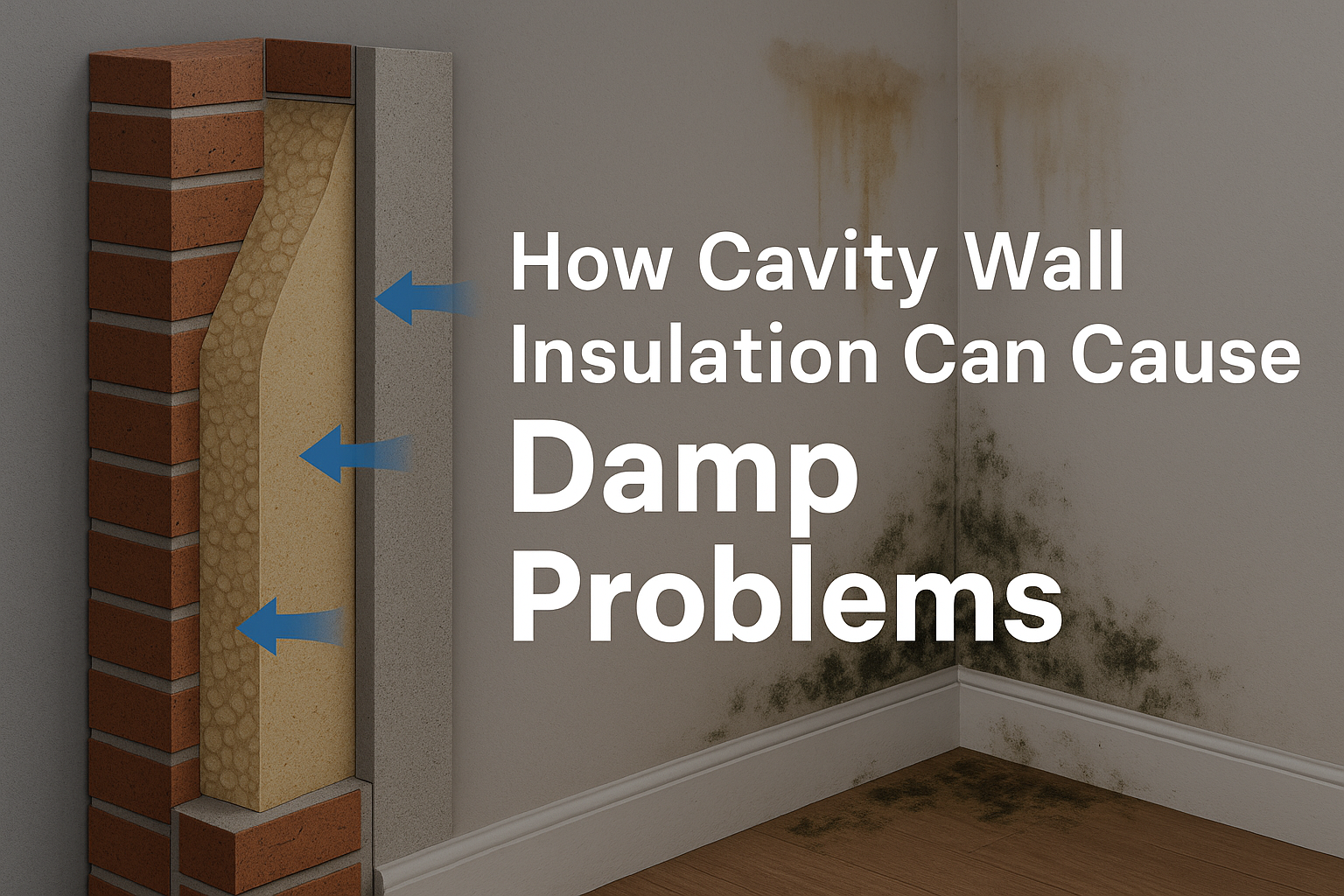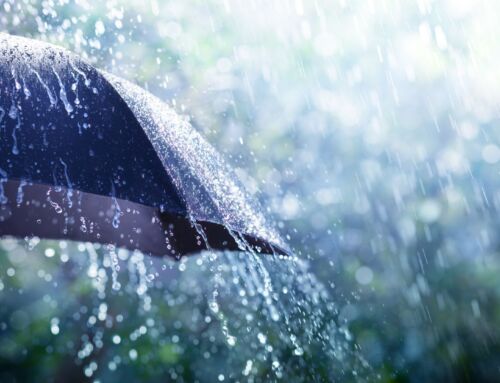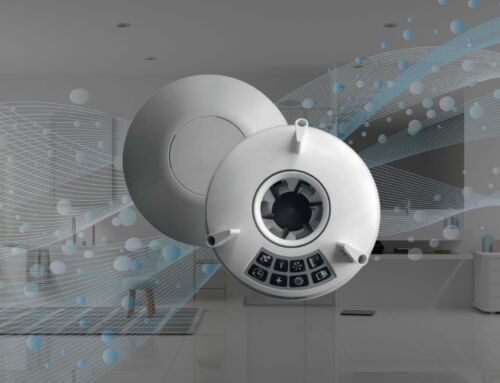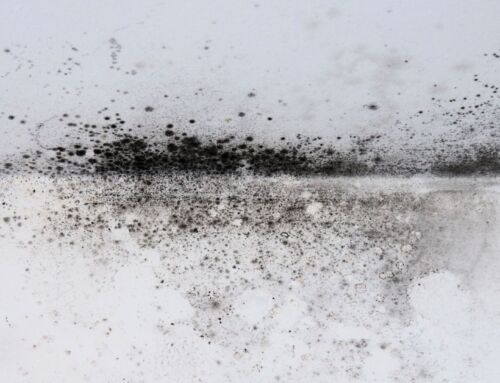Cavity wall insulation (CWI) has long been hailed as one of the most effective ways to improve the energy efficiency of homes. It helps keep properties warm in the winter and cool in the summer, reducing energy bills and providing comfort. However, despite its numerous benefits, cavity wall insulation can sometimes cause unexpected problems, particularly damp issues. This article explores the potential risks of cavity wall insulation and how it can lead to damp problems in homes, offering advice on prevention and solutions.
What is Cavity Wall Insulation?
Cavity wall insulation is the process of filling the space between two layers of the outer walls (the inner and outer leaf) of a building with insulating material. This cavity, often found in homes built after the 1920s, serves as an effective barrier against heat loss. The material used for insulation can vary, but it is typically mineral wool, polystyrene beads, or polyurethane foam.
The primary goal of cavity wall insulation is to reduce heat loss by preventing cold air from penetrating the building through the outer walls, thus improving the home’s energy efficiency. It is often installed to comply with modern building regulations or as part of an energy-saving initiative.
While cavity wall insulation offers substantial benefits, improper installation or existing defects in the wall can lead to significant issues, particularly with dampness.
How Can Cavity Wall Insulation Cause Damp Problems?
Cavity wall insulation is typically designed to be a barrier against cold and moisture. However, in certain conditions, it can inadvertently cause damp issues inside the property. Here are some common ways in which cavity wall insulation can lead to damp problems:
1. Improper Installation
The most significant cause of damp problems linked to cavity wall insulation is improper installation. If the insulation is not installed correctly, gaps or voids in the material can allow water to enter the cavity. This water may then find its way into the inner walls of the property, causing rising damp or penetrating damp.
Improper sealing around windows, doors, or the junction between the cavity and the roof can allow moisture from outside to seep into the walls. Over time, this trapped moisture can lead to the growth of mould and mildew, particularly in areas with high humidity.
2. Incorrect Insulation Material
The type of material used for cavity wall insulation plays a significant role in whether it will cause damp problems. Some insulation materials, such as fibrous wool or cellulose-based products, are more susceptible to absorbing water than others. When these materials become wet, they can lose their insulating properties, making them ineffective and allowing water to penetrate the walls.
Some materials, such as polystyrene beads or foam, are hydrophobic, meaning they repel water. However, even these materials can create problems if the cavity wall insulation is installed inappropriately. For instance, if the cavity wall is not properly ventilated, condensation can build up in the cavity, leading to the development of damp.
3. Blocked or Inadequate Cavity Ventilation
Cavity walls are designed with ventilation to allow moisture to escape from the cavity and prevent water from accumulating inside. However, if the cavity is blocked or improperly ventilated, moisture cannot escape, leading to damp problems inside the property. If cavity wall insulation is applied without considering adequate ventilation, the trapped moisture can remain in the cavity, causing serious issues such as rot, mould, and mildew.
In some cases, the installation of insulation can completely block the vents in the cavity wall, trapping moisture and exacerbating the damp problem. The absence of air circulation also prevents the insulation from drying out after it gets wet, further compounding the issue.
4. Existing Wall Defects
Before cavity wall insulation is installed, it is essential that the building is in good condition, particularly the outer walls. If there are existing cracks or defects in the walls, moisture can easily enter the cavity. This moisture will not be able to escape due to the insulation, and it can result in rising damp or water ingress, leading to damp patches, peeling paint, and even structural damage.
For example, if the pointing between the bricks is deteriorated or the outer layer of the wall is cracked, water may be able to seep into the wall during heavy rainfall. Once the moisture enters the cavity, it may become trapped by the insulation, leading to significant damp problems.
5. Thermal Bridging
Thermal bridging occurs when heat bypasses the insulation and travels through parts of the structure that are not insulated, such as metal lintels, corner walls, or areas around window frames. These areas tend to cool down more quickly than others, which can cause condensation to form. If the condensation forms within the cavity, the insulation can absorb the moisture, and this can lead to damp spots inside the home.
While thermal bridging is often thought of as a problem caused by poorly installed insulation, it can also be a result of inadequate cavity insulation. If the cavity is not filled completely, or if gaps remain, moisture can accumulate in these cold spots and cause issues with dampness.
Signs of Damp Caused by Cavity Wall Insulation
It’s important to be able to identify the early signs of damp caused by cavity wall insulation so that you can address the issue before it becomes a major problem. Some of the common symptoms include:
-
Mould and Mildew Growth: One of the most obvious signs of damp is the appearance of mould and mildew on walls, particularly in corners and along the base of the wall. This can be caused by moisture that has been trapped in the cavity.
-
Peeling Paint or Wallpaper: Damp walls often cause paint or wallpaper to peel off. This is a result of the moisture affecting the surface of the wall and damaging the finish.
-
Musty Smell: If the insulation material absorbs moisture, it can cause a musty smell to develop inside the home. This can indicate that dampness is present in the walls.
-
Condensation: If condensation is forming on the walls inside the home, particularly on cold surfaces such as windows or exterior walls, this can be a sign of trapped moisture in the cavity.
-
Water Stains on the Walls: Visible water stains on the walls, particularly near windows, doors, and the base of walls, are often a result of damp caused by cavity wall insulation problems.
How to Prevent Damp Caused by Cavity Wall Insulation
While cavity wall insulation can cause damp problems, there are steps you can take to prevent this from happening:
1. Ensure Proper Installation
Before having cavity wall insulation installed, ensure that a professional and experienced contractor is used. Proper installation involves sealing any gaps in the insulation material and ensuring it is evenly distributed throughout the cavity. A reputable installer will also check for any existing defects in the walls that may cause damp problems in the future.
2. Check for Adequate Ventilation
It is essential that your cavity wall has sufficient ventilation to allow moisture to escape. During installation, ensure that the ventilation openings are not blocked, and if necessary, install additional vents. This will help ensure that trapped moisture can escape from the cavity, reducing the risk of damp.
3. Choose the Right Insulation Material
If your home is in an area prone to high humidity or regular rainfall, consider using a more water-resistant insulation material, such as polystyrene beads or foam. These materials are less likely to absorb moisture and can provide better protection against damp.
4. Maintain the Building’s Integrity
Before installing cavity wall insulation, inspect the building for any defects in the walls, such as cracks, missing mortar, or damaged pointing. Repair any issues before installing insulation to prevent water from entering the cavity.
5. Monitor for Damp Issues
After installing cavity wall insulation, regularly inspect your home for signs of damp, such as mould, peeling paint, or water stains. If any of these signs appear, address the issue immediately to prevent further damage.
Conclusion
Cavity wall insulation is a highly effective way to improve energy efficiency and reduce heating costs in homes. However, if improperly installed or poorly maintained, it can lead to damp problems that affect the integrity of the property. By ensuring proper installation, choosing the right materials, maintaining good ventilation, and inspecting your home for defects, you can minimize the risks associated with cavity wall insulation and enjoy its benefits without compromising your home’s health and safety.





